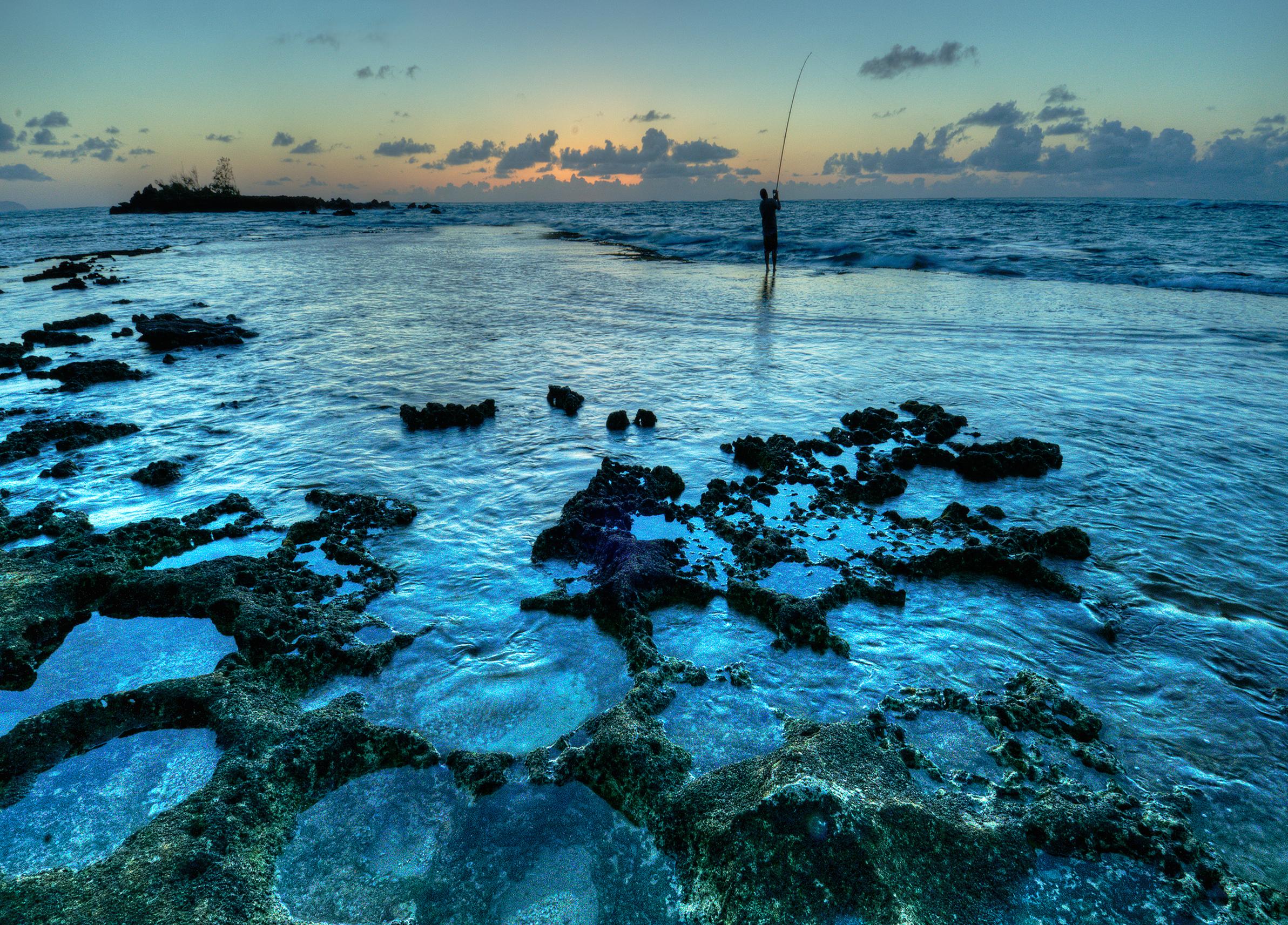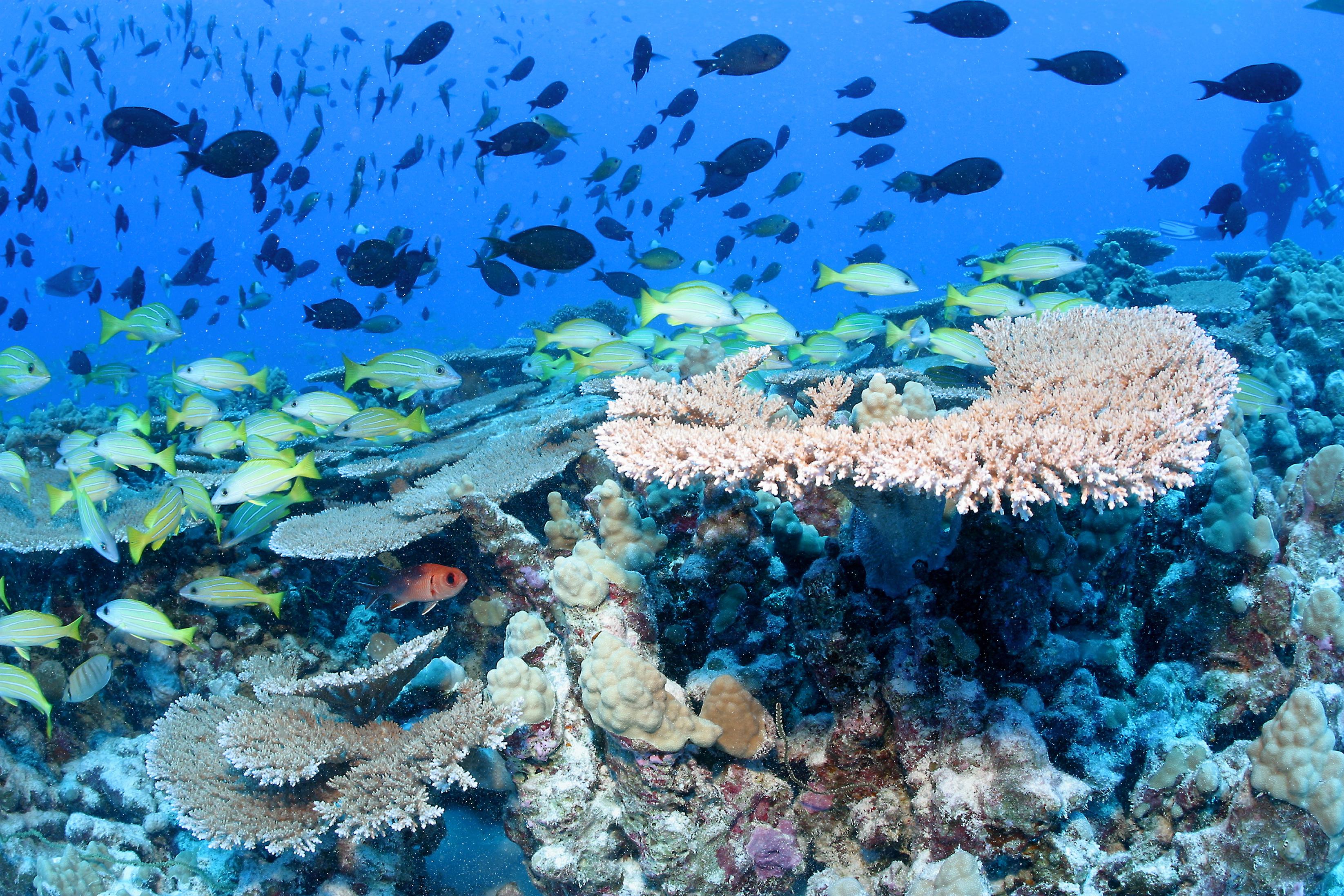
Creating impactful, Indigenous-led solutions to protect biodiversity in the Pacific Islands
Conservation International-Hawai‘i merges the latest science with traditional knowledge to protect Hawai‘i’s rich marine resources and chart a more sustainable future for the island’s people.
To help Hawai‘i’s fish populations thrive, we work closely with local fishing communities and policymakers to promote responsible fishing techniques, enforce illegal netting regulations and support collaborative management of Hawai‘i’s fisheries. We help restore degraded coastal habitats and traditional fishponds by designing and implementing ridge-to-reef conservation solutions that link the protection of land and coastal ecosystems. And we work directly with the local seafood industry to develop programs that track seafood from hook to plate, creating financial incentives for producers to provide consumers with a safe, healthy supply of sustainably harvested seafood.
By combining site-specific conservation efforts with innovative policy work and market-based solutions, we're helping bring abundance back to Hawai‘i’s coastal resources — for the benefit of all Hawaiians.
2011
YEAR FOUNDED
709M
METRIC TONS
of irrecoverable carbon in Hawai‘i1
3.2M
SQUARE KILOMETERS
of marine protected areas within Hawai‘i’s waters2
Areas we work

An innovative, collaborative approach to reef conservation
Serving as feeding and nursing locations for a variety of fish species, Hawai‘i’s coral reefs help sustain local fisheries and the communities that rely on them for income. But these reefs are under threat from pollution, ocean acidification and unsustainable fishing practices.
To help reverse these trends, Conservation International-Hawai‘i has collaborated with the National Oceanic and Atmospheric Administration and other partners to create REEFrame, an innovative coral reef restoration project. With input from local stakeholders — including members of the fishing, surfing and scuba-diving communities — project leaders will design and place large concrete structures beneath the waters near Waikīkī Beach, creating permanent coral nurseries that mimic the natural habitat of coral reef ecosystems. Initially, these artificial structures will host living coral colonies transplanted or dislodged from other locations, eventually becoming permanent natural reefs following colonization by coral larvae and other sea life.
References
- Conservation International (2021, November). Irrecoverable Carbon. Retrieved January 2025, from https://www.conservation.org/irrecoverable-carbon
- 30x30 SkyTruth. (2024, October). Marine Conservation Coverage. https://30x30.skytruth.org/progress-tracker?layers=6,144,7,145&settings=%7B%2522bbox%2522:%5B-167.96,-61.4,167.96,61.4%5D,%2522labels%2522:true%7D